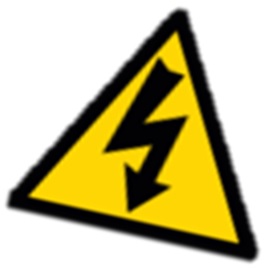 The Low Voltage Directive, now 2006/95/EC, has seen little change, other than its recodification from the previous number 73/23/EEC, since it became mandatory for most manufacturers of electrical equipment in 1996. However, as part of the measures initiated by the New Legislative Framework (NLF) in 2008, the Low Voltage Directive is one of a number of CE Marking Directives that have been revised with a view to aligning them with the common framework as defined in EU Decision No. 768/2008/EU. Subsequently, a NEW recast Low Voltage Directive 2014/35/EU was published in the Official Journal of the European Union on 29th March 2014. This new Directive came into force on the 18th April 2014, however, the current directive (2006/95/EC) will not be repealed until April 20th 2016 and until this 2016 date, manufacturers can continue to distribute products that comply with the current Directive.
The Low Voltage Directive, now 2006/95/EC, has seen little change, other than its recodification from the previous number 73/23/EEC, since it became mandatory for most manufacturers of electrical equipment in 1996. However, as part of the measures initiated by the New Legislative Framework (NLF) in 2008, the Low Voltage Directive is one of a number of CE Marking Directives that have been revised with a view to aligning them with the common framework as defined in EU Decision No. 768/2008/EU. Subsequently, a NEW recast Low Voltage Directive 2014/35/EU was published in the Official Journal of the European Union on 29th March 2014. This new Directive came into force on the 18th April 2014, however, the current directive (2006/95/EC) will not be repealed until April 20th 2016 and until this 2016 date, manufacturers can continue to distribute products that comply with the current Directive.
The new Directive certainly appears very different at first glance, the pdf. version expanding from 10 pages to 18, but upon closer examination much of these changes appear to be reformatting, rewording and reordering with some elaboration on certain requirements and terms. The actual changes, and how they are likely to affect manufacturers are relatively slight, and as such, changing to the new Directive should be fairly simple.
The scope remains the same, however, the list of equipment and phenomena outside the scope of the Directive has had a new addition:
Custom built evaluation kits destined for professionals to be used solely at research and development facilities for such purposes.
As with most of the other recast Directives that have been aligned with the NLF, for manufacturers there are no real changes and the process is pretty much the same as the current Directive, providing that they follow the general principles as set out in Article 30 of Regulation (EC) No 765/2008. Additional, or expanded, requirements for manufacturers include;
|
Additionally, the Directive now specifically details the obligations of Authorised Representatives, Importers and Distributors. In particular, the obligations for importers have been spelt out, which goes a long way to clarifying their role in the CE Marking process. These obligations include;
|
Lastly, a completely new addition in Articles 13 and 14 of 2014/35/EU include provision for acquiring a ‘Presumption of Conformity’ on the basis of complying with International and/or National standards where an appropriate European harmonised standard is not published in the Official Journal of the EU.
Whilst the itemised minimum contents required for the technical file have not changed, and it is still a requirement that documentation shall cover, as far as relevant for the assessment, the design, manufacture and operation of the electrical equipment, sufficient to assess the electrical equipment’s conformity to the relevant requirements, it is now stated that the technical documentation shall include ‘an adequate analysis and assessment of the risk(s)’.
The requirement to include the brand name or the trade mark on the electrical equipment or, where not possible, on the packaging, has been removed from the safety Objectives as still listed in Annex I, however, Article 6(6) of the Directive requires that manufacturers indicate their name, trade name, or trade mark, and the postal address at which they can be contacted on the electrical equipment, or, where that is not possible, on its packaging or in an accompanying document.
The requirements for the Declaration of Conformity, now to be found in Annex IV, have been slightly modified. As opposed to list of contents, Annex IV is a suggested template for the Declaration, and the changes include;
|